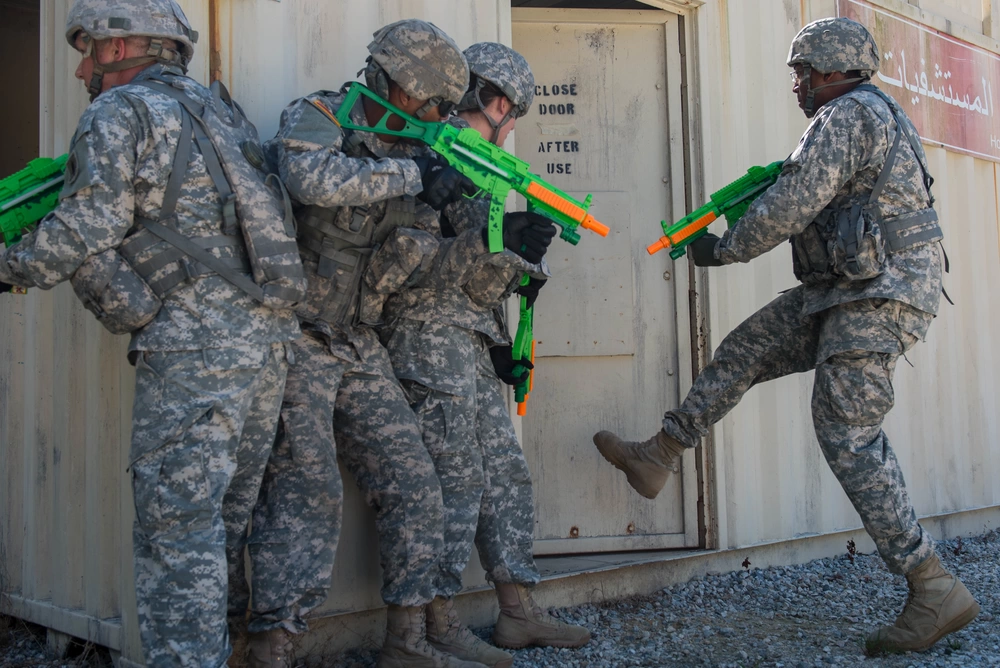How Military Retirement Pay Works

There are multiple types of military retirement pay plans for those who serve long enough to qualify for military retirement or are given a disability retirement due to medical issues caused or aggravated by military service.
Defense.gov says, “Members who accumulate 20 or more years of active service are eligible for retirement.” That applies to active duty troops.
Members of the Reserve “who accumulate 20 or more years of qualifying service are eligible for reserve retirement when they reach age 60 or, in some cases, a lesser qualifying age.”
Military Retirement Pay Plans and Who Qualifies for Them
- Final Pay: You must have started military service before September 8, 1980.
- High-36: Military service on or after September 8, 1980, but before August 1, 1986, or service began on or after August 1, 1986, and the servicemember did not choose the Career Status Bonus and REDUX retirement system.
- CSB/REDUX: Military service began on or after August 1, 1986, but before January 1, 2003 and the servicemember chose to receive a Career Status Bonus.
- Blended Retirement System: Duty began for the first time on or after January 1, 2018, or duty began before December 31, 2017, and the servicemember opted into BRS during the opt-in period.
- Disability Retirement: The servicemember was declared medically unfit for continued service with a DoD disability rating of at least 30%.
Defense.gov notes, “All four of the regular and non-regular retirement plans determine initial monthly retired pay by applying a percentage multiplier to the retired pay base.”
Read more: Blended Retirement System: An Overview
Calculating Time In Service Toward Military Retirement
For active-duty troops, it’s a simple calculation. Take all applicable years of military service “for computation of the retired pay percentage multiplier include all active duty and any credited reserve points divided by 360.”
For members of the Reserve, there are three ways to calculate years of service as they apply toward retirement.
One method is used to determine when the applicant may draw retirement pay, one is for “determining the applicable active duty base pay upon which to compute retired pay,” and one is used for the retired pay percentage multiplier.
Years of Service for Retirement Entitlement
This category includes “each one-year period in which the person has been credited with at least 50 points:”
- 1 point for each day of active service
- 1 point for each attendance during drill periods
- 1 point for each day of funeral honors duty
- 15 points for each year in the Reserve
To qualify for retirement, you must have 20 years of service.
Years of Service (YOS) for Pay Base
When combined with pay grade, YOS for pay base “includes all periods of active service and all periods of Reserve or National Guard service counted day for day.”
This pay base is calculated “as though the reserve member were serving on active duty immediately prior to retirement,” meaning years of service “continue to accumulate even after the member has entered the retired reserve and continue until they actually begin receiving such pay (usually age 60).”
Years of Service for Retired Pay Percentage Multiple
This category of years of service “includes all periods of active service (counted as one point for each day) plus all points earned through qualifying reserve duty, not exceeding annual limits, divided by 360.”
Reserve Retirement Age
Typically, Reservists can’t draw military retirement pay until they reach age 60. Those recalled to active duty may have this age requirement lowered by three months for every 90 days spent on active duty.
Read more: Military Retirement Pay for Guard And Reserve
Military Retirement Pay Charts
There are no military retirement pay charts as such. Instead, your retirement pay is calculated using the formulas specific to each type of plan.
- Final Pay: 2.5% times the number of years of service times final basic pay on the day of retirement.
- High-36: 2.5% times the number of years of service times the average of the member’s highest 36 months of basic pay.
- CSB/REDUX: Career Status Bonus $30,000 lump sum payment at 15th year of service in exchange for a commitment to serve until retirement (20 total years.) Before age 62 the benefit is 2.5% times the number of years of service minus 1.0% for each year of service less than 30, times the average of the member’s highest 36 months of basic pay. Age 62 and older, 2.5% times the number of years of service times the average of the member’s highest 36 months of basic pay
- Blended Retirement System: A DoD contribution worth 1% of basic pay to a Thrift Savings Plan (TSP) after 60 days after starting military service. An additional 4% matching contribution may be possible to TSP beginning after 2nd year of service through 26th year of service. Those the VA determines “otherwise qualify for a retirement based on longevity of service” may receive 2.0% times the number of years of service times the highest 36 months of basic pay.
- Disability Retirement: Retired Pay Base times Multiplier. The Retired Pay Base is found under the individual program; Final Pay, High-36, or BRS depending on the entry date. The multiplier is either: Servicemember’s percentage of disability, or years of creditable service times 2.5% or 2.0%. This is based on whether the member was in a legacy retirement program or the Blended Retirement System before the disability. No matter which option is available, the multiplier is limited to 75% by law.
More on the Retired Pay Base
Defense.gov reports there are two ways to determine the military retirement pay base. The Final Pay method and High-36 method both use calculations based in part on the date of entry into military service.
Final Pay “establishes the retired pay base equal to final basic pay,” according to Defense.gov, where High-36 “is the average of the highest 36 months of basic pay divided by 36. This is generally the last three years of service and is sometimes called high-3.”
More on the Retired Pay Multiplier
Final Pay and High-36 retirement pay plans count each year of service as worth 2.5% toward the retirement multiplier.
For the REDUX retirement plan, the DoD states, “the High-36 multiplier is reduced by one percentage point for each year that the member has less than 30 years of service at retirement.“
That means two decades of military service are worth a 40% multiplier. For disability retirement programs, the multiplier is the higher number of
- The disability percentage assigned by the Service at retirement not to exceed 75%, OR;
- The result of multiplying the years of service by the applicable retirement plan multiplier (e.g., 2.5% for High-36 or 2.0% for BRS).
Cost of Living Adjustments
Military retirement pay includes Cost of Living adjustments to protect against rising costs due to inflation. These adjustments are based on changes to the Consumer Price Index though some plans may calculate COLA differently.
Related: Thrift Savings Plan: Everything You Need To Know
About the author
Editor-in-Chief Joe Wallace is a 13-year veteran of the United States Air Force and a former reporter/editor for Air Force Television News and the Pentagon Channel. His freelance work includes contract work for Motorola, VALoans.com, and Credit Karma. He is co-founder of Dim Art House in Springfield, Illinois, and spends his non-writing time as an abstract painter, independent publisher, and occasional filmmaker.


